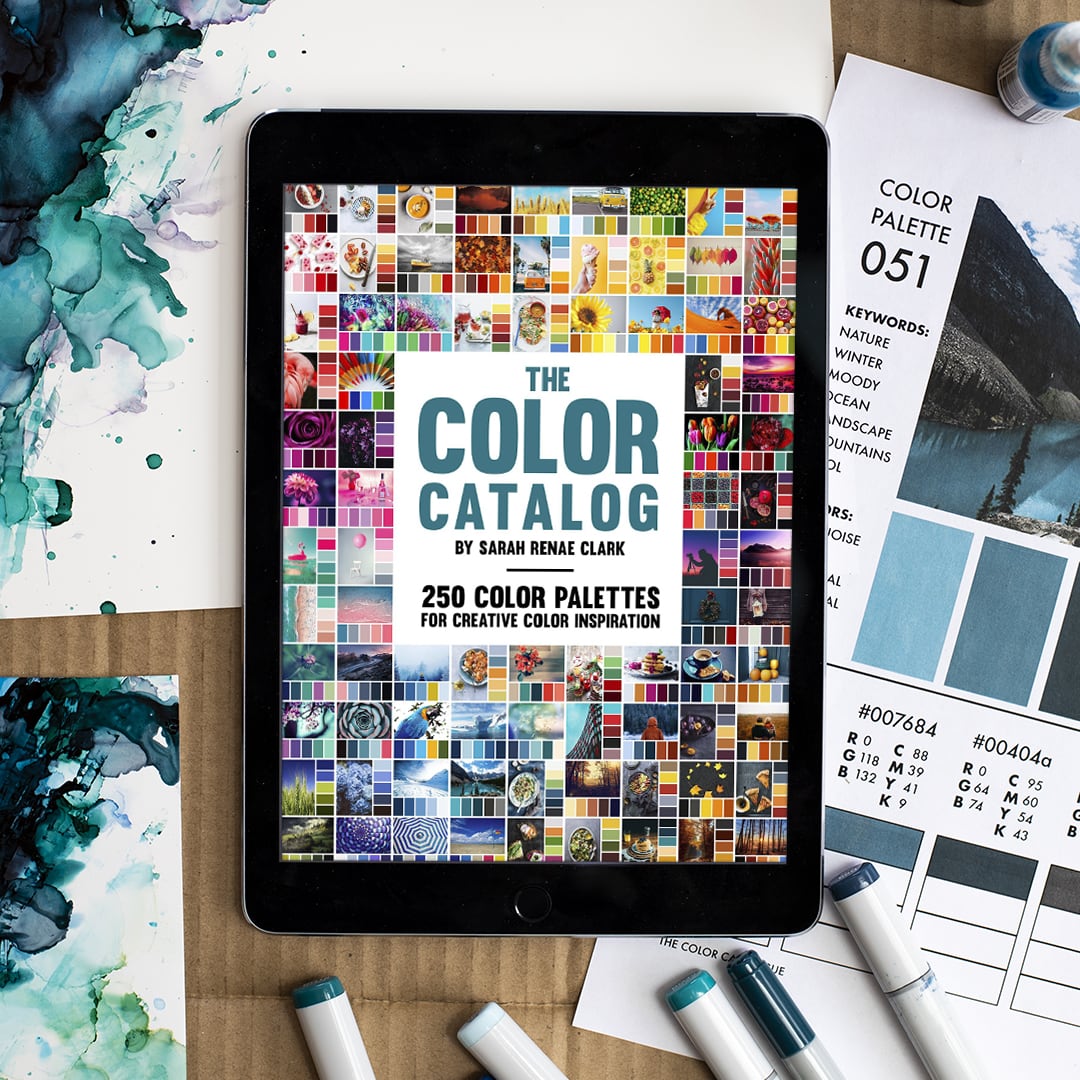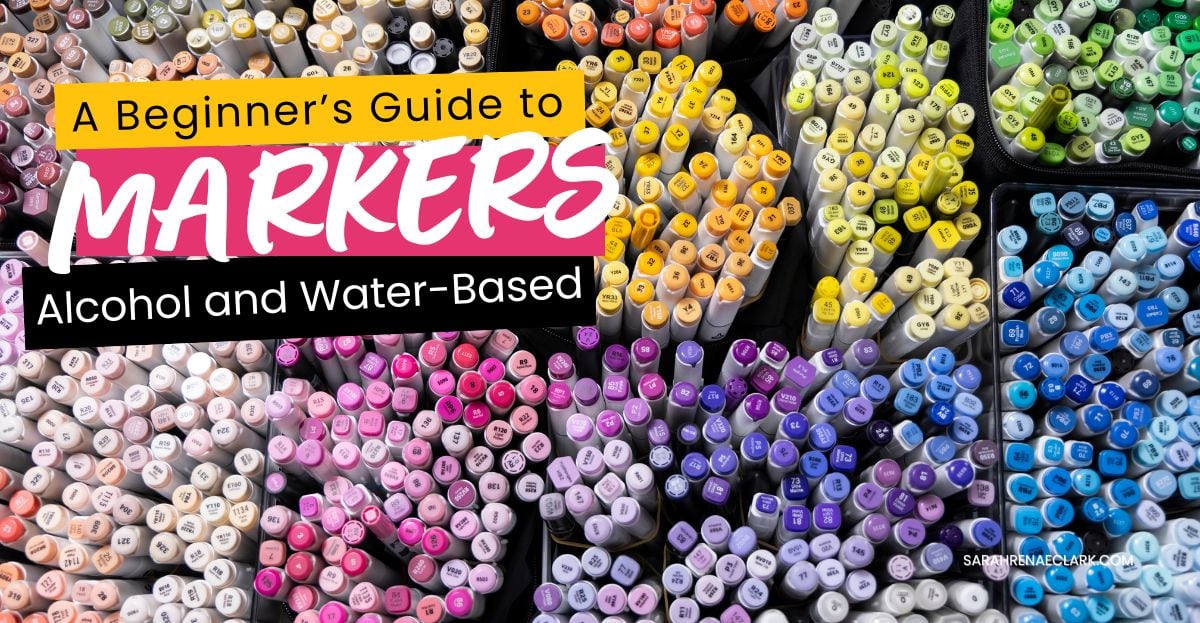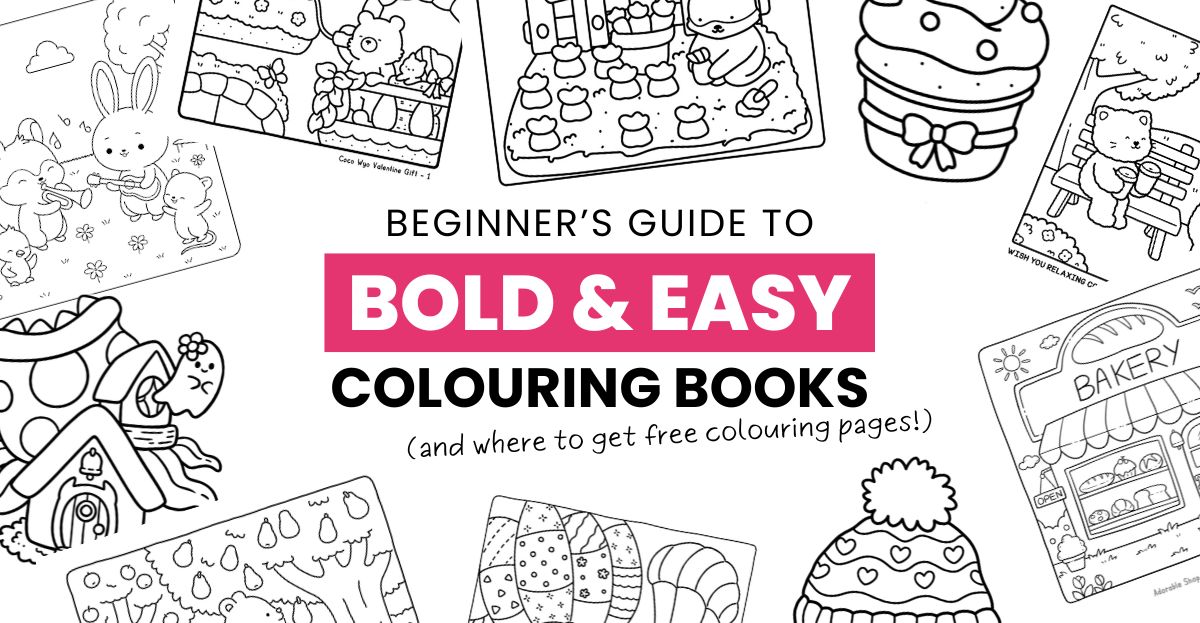Note: This post contains Amazon affiliate links and I may earn a commission if you click them and make a purchase (at no cost to you).
When I first started coloring, I didn’t own a set of pencils at all. So I started researching online for the best pencils for adult coloring and found myself completely overwhelmed with choices… AND they were SO expensive!
Have you ever looked up the price of a set of Caran D’ache Luminance Colored Pencils? Or the 150 set of Holbein Artist Colored Pencils? These are just a few of the professional-quality brands that I see popping up on coloring wish-lists all the time, leaving many of us in a permanent state of dreaming!
But luckily, you don’t have to take out a mortgage to get nice pencils. There are some more affordable pencils that are still very high quality and are perfect for adult coloring books, even if you’re a beginner!
One brand that often gets mentioned is Prismacolor – and in this article, I want to show you how you can use a small set of just 12 Prismacolor pencils to create even more colors than the full 150 set.
And to take it a step further for us budget-friendly folk, I’ve compared them with a super affordable set of 12 Crayola coloring pencils, that you should be able to find at any local stationery shop, or even the supermarket!
How many pencils do you REALLY need for adult coloring?
I own the 150 set of Prismacolor pencils – but I find myself constantly using the same 20-30 colors from the set, and ignoring the rest. In fact, more than half of the pencils in my set have never been sharpened for the first time!
So I really don’t think it’s necessary to invest in a big set when you first start adult coloring.
In the below video, I’m going to show you how to make all the colors you’ll ever need from just 12 pencils. Personally, I think 12 is too few (as I’ll discuss in the video) so I’d aim to buy somewhere between 20-30 colors in a set when you first start coloring.
How to make 1000+ colors from just 12 colored pencils
In this video, I wanted to find out just how well the Crayola colored pencils compared to the Prismacolor Colored Pencils.
I also wanted to show you exactly how you can create a huge range of colors out of a set of 12 pencils… more than just 144!
How to create your own colored pencil mixing chart
- Download the colored mixing chart template or draw a grid on a blank piece of paper.
- Choose your set of pencils and write the color names across the top and down the side. You can do this in any order, but I find it easiest to follow the color wheel and use the same order for both top and side, as you can see in the pictures below.
- Start by drawing a light layer of your dominant color in each box. You can do this one at a time or all at once, like I’ve done in the video. Make sure you press lightly – it’s important to work in light layers so you don’t ‘burnish’ the paper, which stops you being able to add the second color.
- Then, add a layer of your second color, your “mixing” color.
- (Optional) you can add another layer of your dominant color, or continue building up layers of both the dominant and mixing colors.
When your chart is finished, you’ll have 144 colors from your 12!
Yes, I know, this isn’t 1,000+… we’ll get to that shortly!
Prismacolor soft-core colored pencils: color mixing chart
Let’s stop for a moment to make some observations about the color chart I’ve created with these 12 colors. Surely, some colors will be repeated within the 144, right?
Our dominant color is going to be stronger than our mixing color, because it is the first layer of pigment on the paper. This is further exaggerated because we’ve done 2 layers of the dominant color and only 1 layer of the mixing color.
When red is the dominant color and yellow is the mixing color, the result will be a darker orange.
But when yellow is the dominant color and red is the mixing color, the result will be a lighter orange, more towards a yellow.
This is how red and yellow can make a variety of oranges.
This is easier to understand if you are familiar with the color wheel. Mixing two colors together will create new colors in between, and the more of a particular color you add, making it the dominant color, the more the resulting color will look like that original color.
If you’re wanting to create an even bigger range of colors, you can vary these amounts and try doing more or less layers of each color, like the red and yellow above.
Mixing complementary colors = gray, muddy colors
If you look at our chart, you’ll also notice that some of these colors are coming out quite a muddy gray. For example, green and pink really don’t seem to make a nice color. That’s because colors on the opposite side of the color wheel make gray when mixed together.
If you remember back to my color theory video, you’ll know that we call these complementary colors – and while they look great side by side, like the red and green you see at Christmas, they look terrible when mixed together.
Every time you mix 2 complementary colors, you will get a gray color.
I’ll explain more about why this happens and how to avoid it in a future video, but to keep this simple, just remember that similar colors make for better mixes – which we can see by looking at our chart!
How to turn 144 colors into 1000+
Even if we vary each dominant color (like the red+yellow example above) that’s still nowhere near 1000 – so where do the rest of the colors come from?
We can bring in more colors by mixing 3 colors together instead of 2. So I’ve made a copy of my color mixing chart and I’m going over the whole thing with a light layer of sky blue. As you can see, the difference is minor, but the additional color is creating even more variety.
Imagine recreating this with all 12 pencils, and you’ve got over 1000 different colors.
We probably shouldn’t be surprised by this – after all, our printers can print almost any color that exists and it only uses 4 colors – Cyan, Magenta, Yellow and black – CMYK.
So technically, we don’t even need all 12 colors. But, it definitely helps to more than just cyan, magenta, yellow and black unless you can accurately put down your pencil layers and blend colors with the accuracy of a computer.
Are Crayola colored pencils as good as Prismacolor?
Crayola make a great pencil, and they are perfect for beginners. But if you’re wanting to improve your adult coloring and learn how to blend, it’s worth the small investment to get yourself a better set of pencils.
Cheaper pencils will generally have more texture, and can be hard to make smooth blends.
You can improve this with lighter layers and using different blending solutions (like pencil blending solution or nail polish remover), but it can never quite compare to the better quality pencil and will take more effort to produce the same results.
If you’re trying to stick to a budget, either get a larger set of Crayola (so you don’t have to worry as much about mixing your own colors) or aim for a smaller set of artist-grade or student-grade pencils, like Prismacolor, Derwent or Arteza. I’ve got some other recommendations here and will be comparing these in a future video.
Keep an eye out for my upcoming video where I’ll be coloring a full page with my small set of 12 Crayola pencils, so you can see some of the techniques you can use to get the best result from a cheap set.
Tip: When choosing a color palette, you don’t have to match the colors EXACTLY. Color palettes are a STARTING POINT. There are no rules that say you have to use the exact colors from the palette, or only the colors from the palette.
Prismacolor soft-core colored pencils: color mixing chart
Here’s a look at the final color mixing chart, using my set of 12 Prismacolor Soft-Core colored pencils. I wasn’t able to find the correct browns for this test- the browns included in the 12 set are PC946 Dark Brown and PC945 Sienna Brown.
I’m also a little disappointed that Prismacolor doesn’t offer a pink or magenta – because this is one of the main colors that we can use to mix other colors. And it’s hard to create a good pink with what we’ve got in this 12 set.
Where can I buy colored pencils for adult coloring?
I’ve put together a huge list of colored pencils, with links to buy and recommendations on which are the most affordable, which perform the best, and more.
Find the full list here or see my personal favorites (in 2021) here.
Resources for choosing colors:
Use this free colored pencil mixing chart to practice blending your colors and build a full spectrum of colors from just 12 pencils.
This chart is perfect for beginners, and is an easy way to extend your small pencil collection and learn which colors mix together to make new colors.
There’s a second page included where you can practice mixing 2-3 colors together.
Have you ever wondered how some artists are able to find perfect color combinations that just seem to work, every time? Learn how to use the color wheel and color harmonies to choose color combinations that look GOOD.
This workbook includes printable worksheets so you can try out the color harmonies for yourself or make your own color wheel with your pencils or markers.
I’ve created The Color Catalog Volume 1 & 2 to bring you 500 color palettes to choose from!
Find the perfect color combo for any project and get inspired to try something new. Store the PDF on your mobile or tablet to find a color combination by color, keyword or collection in just a few taps. Or use the printable version to test out your own pencils or markers against each palette.
You’ll never be stuck for colors again.
If you found this post helpful, please share it! Use the social buttons below to share with your friends on Facebook or Twitter, and save a copy to Pinterest so you can refer back to it at any time!
I’d love to hear from you – what kind of pencils do you own? What are your dream set?























You’d think that studying art at university would teach one about all this, and here I find it online with the magnificent Sarah Renae Clark! Not only did I learn about color mixing, but also the difference in quality, make and price of a coloring pencil. This really opened my eyes with Sarah’s clear and well displayed efforts to run anyone through the journey in art and color!
I have been wanting a set of Caran D’ache for ages, but the price. After watching your 12 pencils video I decided to see if Caran D’ache offered a set of twelve They did. I ordered them and am eagerly awaiting their arrival.
Thank you for the idea.